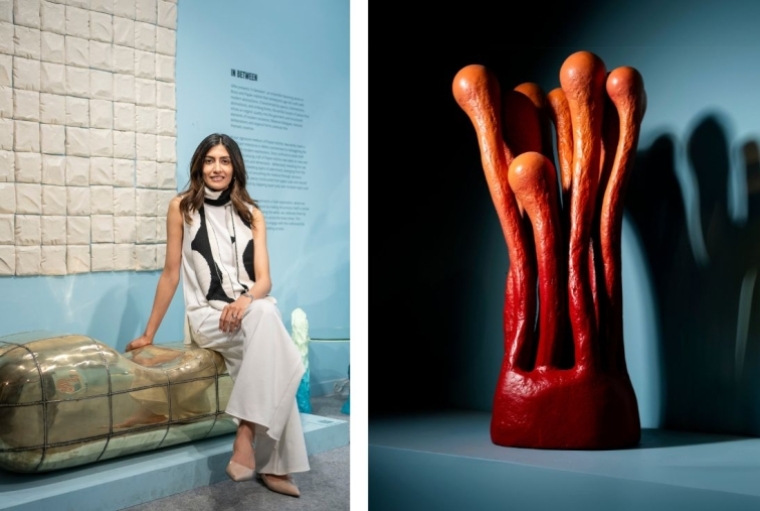

At the heart of VaÌ„he Ensemble lies a deep respect for the ancient crafts of India, driven by a passion to infuse them with new life and purpose. Amidst today’s fast-paced world of mass production, founder Vaishnavi Walvekar envisioned a slower, more meaningful connection with the objects that surround us. Teaming up with a talented community of artisans in Srinagar, VaÌ„he Ensemble breathes fresh vitality into the time-honored tradition of Kashmiri papier-maÌ‚cheÌ for their inaugural collection.
In our conversation with Walvekar, we delve into their origins, the intricacies of papier-maÌ‚cheÌ craftsmanship, and their dreams for the future.

BEGINNINGS
The idea of VaÌ„he came to me because I wanted re-interpret age-old Indian crafts. We spend years seeing our domes- tic crafts here and there—and somewhere stop relating to them as discerning buyers (being one myself). During my summer break back in India while pursuing my MFA in Industrial Design in San Francisco, I was privy to some spectacular crafts from across India at curated bazaars like Dilli Haat, making me question why they remained the same over time. I’m here on the mission of reimagining and repositioning them.

USING KASHMIR’S PAPIER-MAÌ‚CHEÌ TECHNIQUE
Kashmir’s papier-maÌ‚cheÌ artistry stands out not only for its exquisite beauty but also for its sustainability. The craft relies on eco-friendly materials—primarily waste paper pulp mixed with natural binders (rice starch).
A journey that began in the valleys of Kashmir reinforced this idea. Thriving on collaborations with the remains of a small Sakhta community-based in Srinagar, multiple experiments and reinforcement techniques paved the way for brewing new reinterpretations of this craft in form and scale. We peel back some layers to be able to truly appreciate its raw material and let that be the hero. Brutalism, atypical forms and textures play a huge part in creating the objects, sculptures, lighting and furniture!
Unlike most popular crafts in India, papier-maÌ‚cheÌ is an unsung hero and a dying art whose potential has yet to be discovered beyond the craft’s established rules and applications, which are often restricted to trinkets and small objects. From finding a small papier-maÌ‚cheÌ vase I bought on a school trip to seeing comparable products on display in a craft show after returning from my master’s, I realised how little had changed. In terms of the design language, traditionally, after drying the made object, the surfaces are abraded and polished—near perfection. And then the Nakashi art is used on the object, unfortunately leaving us with no hint of what the true raw material is underneath.

ODE TO YESTERDAY
It’s an ode to the innovations of yesterday, which are handicrafts. I wish for those who acquire the objects to feel like they’re holding a piece that is a testament to time, sustainability and new-age interpretations of the age-old crafts. Some crafts are either forgotten or not appreciated due to dated designs. Bringing these into your homes should make you think twice about how you never thought papier-maÌ‚cheÌ or brass could be expressed like this.
This is an exclusive excerpt from our May EZ. To read the entire article and more such pieces, follow the link here.
Words Paridhi Badgotri
Date 05.06.2024